How Repair A Kitchen Chair With Broken Leg
Repairing Broken Chair Leg
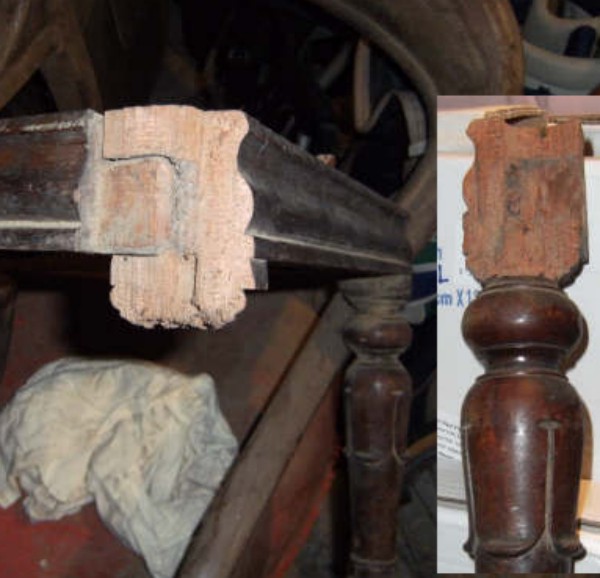
This is a very common problem and repairing broken chair leg is all part of chair restoration. One of the front legs has broken at the seat rail mortices and the remedy is a fairly serious replacement of the mortice block – the square piece at the top of the leg.
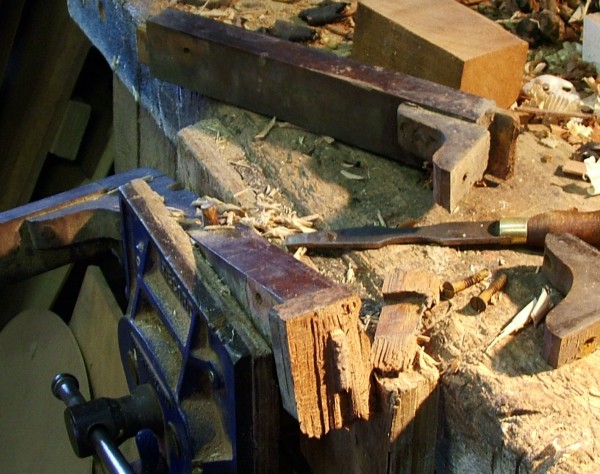
The corner brace is removed and the broken pieces of the block are removed from the front seat rail. The good part of the leg which is going to exist re-used is cut off foursquare. With a turned leg, I ordinarily aim to cut the leg where a detail in the turning volition minimise the appearance of the joint.
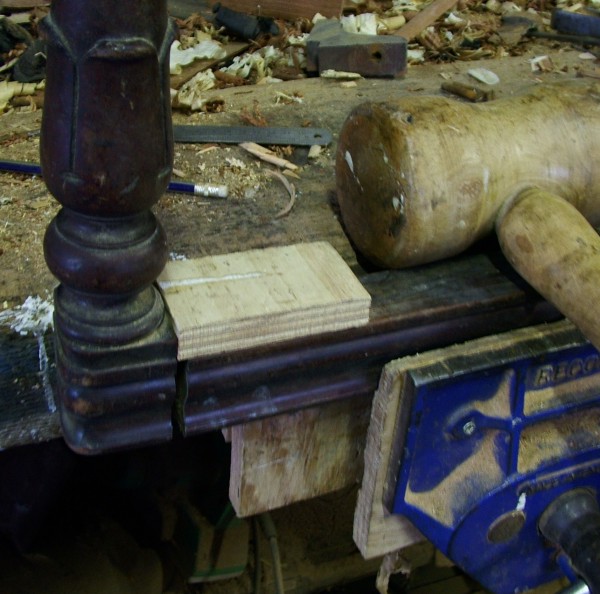
The other front end leg has to be removed to let reassembly, and I can utilise that ane equally a (opposite) pattern for the new leg.
Once the glue articulation is cracked, it is usually straightforward to drift the leg off the side rail using a softwood cake which will protect the woods and also "aim" the impact of the mallet.
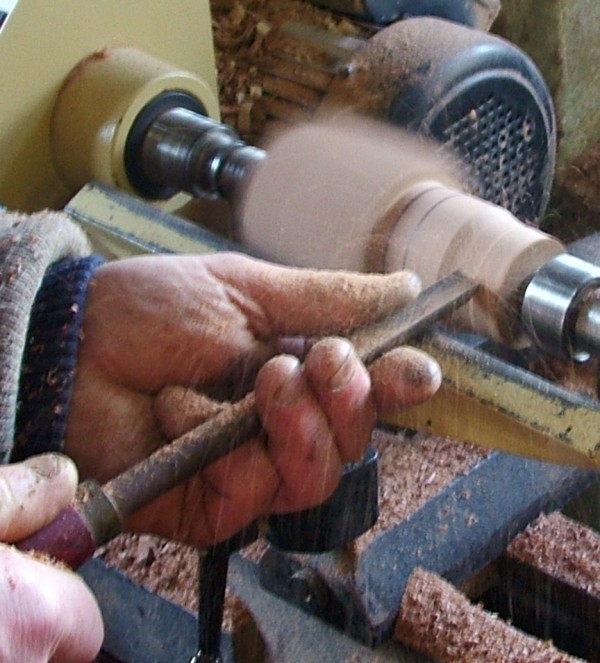
Because of the extent of the damage, the new component will contain square and turned elements so I mark up a mahogany blank and put it into the lathe to turn off the detail below the foursquare cake.
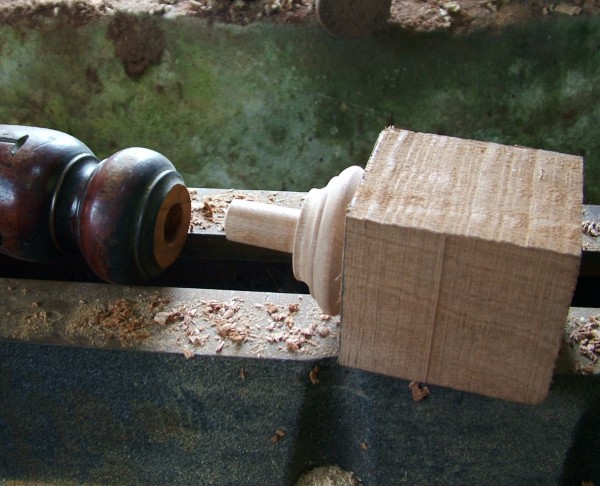
Hither's the turning finished – I have turned a ¾" spigot and I've also drilled a ¾" hole down the axis of the leg. It needs to be a reasonably tight fit for a minimal glue line.
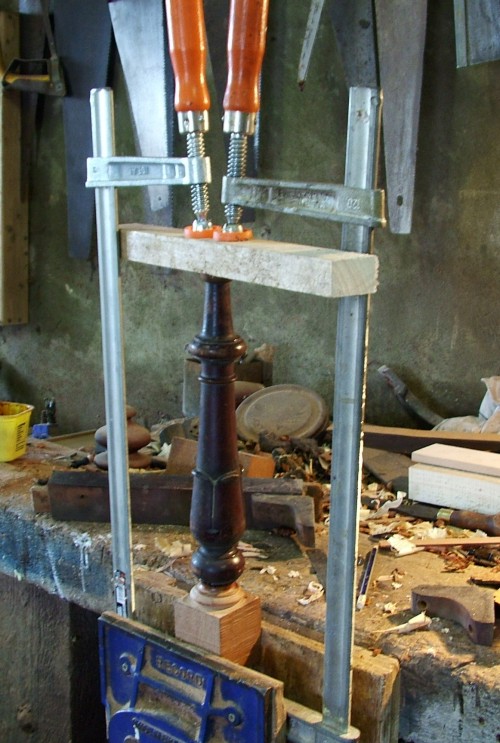
The two parts are glued upwards and clamped tight. Clamping is crucial to the success of the chore and it is also important at this stage to make sure the rotation of the item is right for the foursquare block.
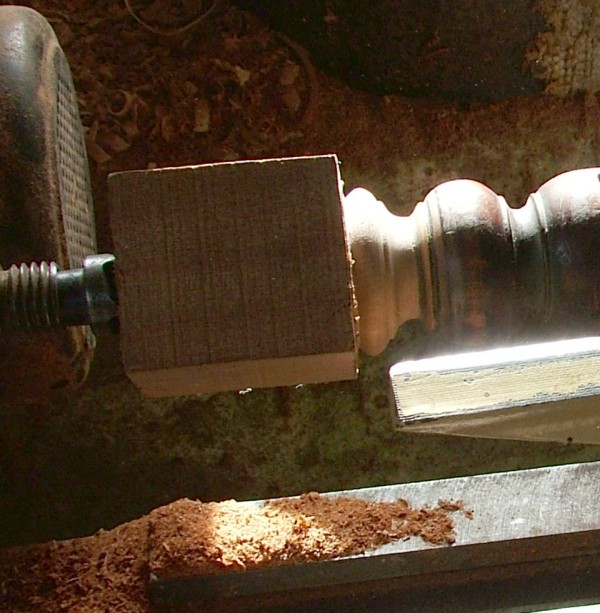
Once the gum has set, the assembly tin be put dorsum in the lathe for some fine finishing. The original centre mark is all the same in the cake – information technology just needs the new piece to exist composite to the original.
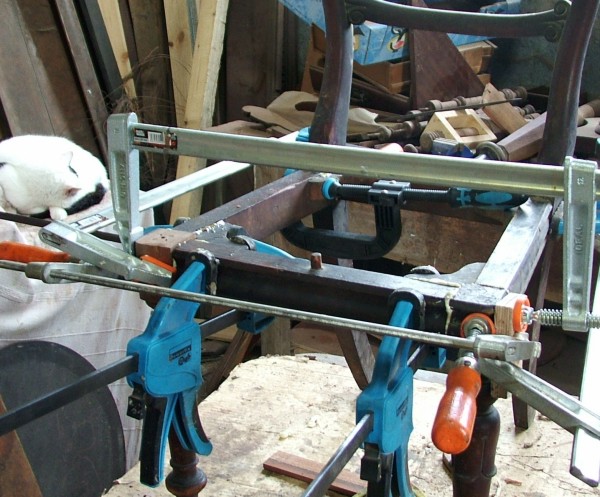
The chair frame is reassembled with the repaired leg and any loose corner braces re-glued. Over again, clamping is absolutely essential. In other words, the assembly procedure here is roughly the way it might have been done originally but of course, the original maker would be very dandy to get the joints tight as a matter of pride.
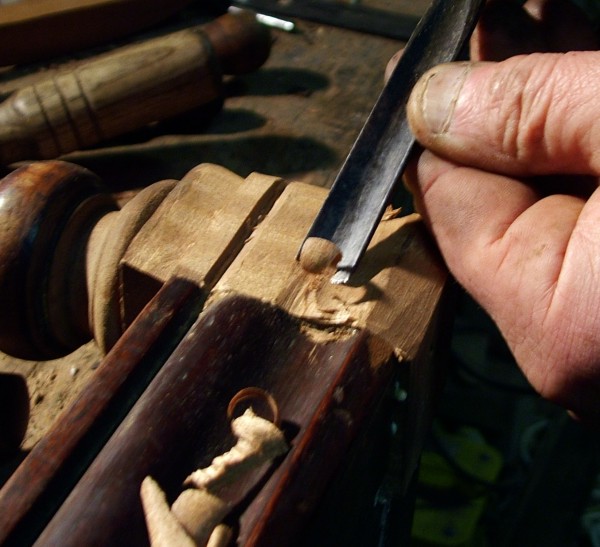
Once the glue is set, the next job is to cutting the detailing in the block – in this case, at that place is an added complexity because the contour of the side rails continues around the block to the front rail.
Cutting tools for this piece of work demand to exist extremely sharp – ground on a fine stone and then honed with crocus pulverization or the equivalent on a hardwood cake.
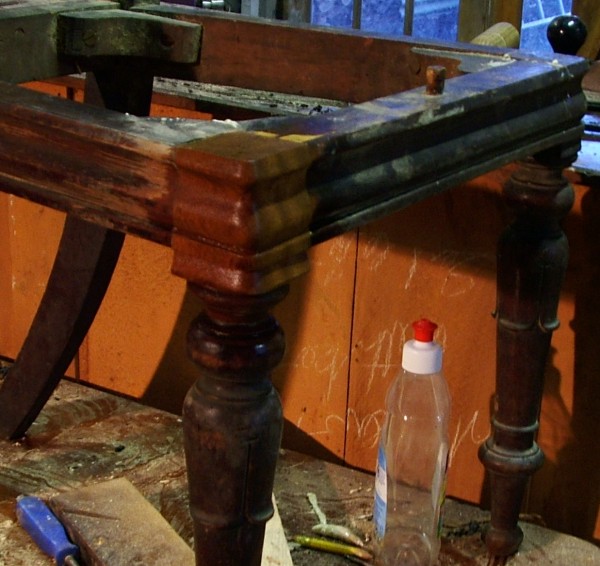
Some fine sandpaper and the block is coloured to lucifer the original. I use Bichromate of Potash, (sup-plied by TE Labs Tullow) which was traditionally used to give Mahogany that characteristic rich brown colour only information technology does come up with many Wellness Warnings – otherwise, there are less noxious stains available.
The chair is at present set up to be returned to the customer who will clean off the wood and supervene upon the sometime polish.
Y'all tin can learn how to do this in ane of our weekend courses. We do far more than repairing broken chair leg.
Interested?Go to https://oldchairs.ie/weekend-courses/
How Repair A Kitchen Chair With Broken Leg,
Source: https://www.oldchairs.ie/repairing-broken-chair-leg/
Posted by: rosenthalovent1985.blogspot.com


0 Response to "How Repair A Kitchen Chair With Broken Leg"
Post a Comment